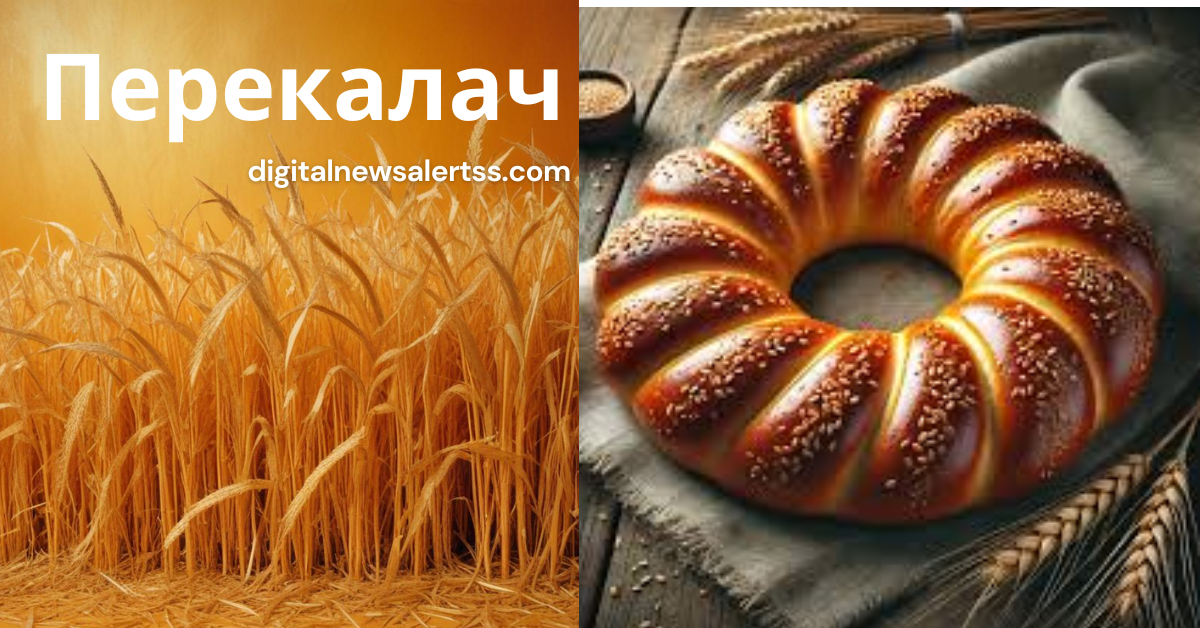Перекалач (pronounced “perekalach”) is a traditional Ukrainian bread that holds deep cultural significance. This ring-shaped loaf has been an integral part of Ukrainian customs for centuries, serving as more than just a source of sustenance. In this comprehensive article, we’ll explore the rich history, symbolic meaning, and modern relevance of перекалач, shedding light on its importance in Ukrainian culture and its potential appeal to those interested in traditional foods and customs.
The Origins and History of Перекалач
Ancient Roots
The history of перекалач dates back to ancient Slavic traditions. Early Ukrainians, like many agricultural societies, held bread in high regard as a symbol of life and prosperity. The circular shape of перекалач is believed to represent the sun, a crucial element in agricultural success.
Medieval Times
During the medieval period, перекалач gained prominence in Ukrainian wedding ceremonies. Its ring shape came to symbolize the unbreakable bond between newlyweds, as well as the continuity of family lineages.
Cultural Significance Through the Ages
As Ukrainian culture evolved, so did the role of перекалач. It became a staple in various rituals and celebrations, each adding layers of meaning to this humble bread.
The Making of Перекалач
Ingredients
Traditional перекалач is made with simple, wholesome ingredients:
– Wheat flour
– Yeast
– Water
– Salt
– Sometimes eggs and milk for enrichment
Preparation Process
1. Mixing the dough
2. Kneading and first rise
3. Shaping into a ring
4. Second rise
5. Baking until golden brown
Variations
While the basic recipe remains consistent, regional variations exist:
– Some areas add raisins or other dried fruits
– Others incorporate seeds or nuts for texture
– In some regions, a sweet version with honey is popular
Symbolism and Cultural Significance
The Circle of Life
The ring shape of перекалач represents the cyclical nature of life, seasons, and agricultural cycles. This symbolism resonates deeply with Ukrainian agricultural traditions.
Fertility and Abundance
In many rituals, перекалач symbolizes fertility and abundance. Its presence at weddings and harvest festivals underscores hopes for plentiful crops and large families.
Unity and Continuity
The unbroken circle of перекалач represents unity within families and communities. It’s often shared among family members or wedding guests, reinforcing social bonds.
Перекалач in Ukrainian Traditions
Wedding Customs
At traditional Ukrainian weddings, перекалач plays a central role:
– It’s often used to welcome the newlyweds
– Sometimes, the bride and groom share the bread as their first meal together
– Pieces may be distributed to guests as a symbol of shared blessings
Harvest Festivals
During harvest celebrations, перекалач represents the fruits of labor and hopes for future abundance. It’s often displayed prominently and shared among community members.
Religious Observances
In some Ukrainian Christian traditions, перекалач is blessed during religious services, especially around harvest time or during Easter celebrations.
Modern Relevance of Перекалач
Preserving Heritage
In today’s Ukraine and among Ukrainian diaspora communities, перекалач serves as a tangible link to cultural roots. Many families continue to make and share this bread during important occasions.
Culinary Tourism
As interest in traditional foods grows, перекалач has become a point of interest for culinary tourists exploring Ukrainian cuisine.
Fusion Cuisine
Some modern chefs are incorporating перекалач into fusion dishes, blending traditional symbolism with contemporary culinary trends.
Making Перекалач at Home
Basic Recipe
For those interested in trying their hand at making перекалач, here’s a simple recipe:
Ingredients:
– 4 cups all-purpose flour
– 1 packet active dry yeast
– 1 cup warm water
– 2 tablespoons sugar
– 1 teaspoon salt
– 2 tablespoons vegetable oil
Instructions:
1. Dissolve yeast in warm water with sugar
2. Mix in flour, salt, and oil to form a dough
3. Knead for 10 minutes
4. Let rise for 1 hour
5. Shape into a ring
6. Let rise again for 30 minutes
7. Bake at 375°F (190°C) for 30-35 minutes
Tips for Success
– Ensure your yeast is fresh and active
– Don’t overwork the dough
– Allow proper rising time for best texture
Перекалач Around the World
Ukrainian Diaspora
Ukrainian communities worldwide continue to make перекалач, especially during holidays and special events. It serves as a connection to their heritage.
International Recognition
As global interest in diverse cuisines grows, перекалач is gaining recognition beyond Ukrainian communities. It’s sometimes featured in international bread exhibitions and food festivals.
Similarities to Other Cultures
Ring-shaped breads exist in many cultures, from the Jewish challah to the Greek koulouri. Перекалач shares symbolic similarities with these breads, highlighting common threads in human traditions.
Nutritional Aspects of Перекалач
Basic Nutrition
Перекалач, being a bread product, is primarily a source of carbohydrates. However, its nutritional profile can vary based on ingredients used.
Potential Health Benefits
– When made with whole wheat flour, it can be a good source of fiber
– The addition of seeds or nuts can increase protein and healthy fat content
– As part of a balanced diet, it can provide sustained energy
Moderation and Balance
While перекалач holds cultural significance, it’s important to consume it as part of a varied diet, especially for those monitoring carbohydrate intake.
Preserving the Tradition of Перекалач
Educational Initiatives
Many Ukrainian cultural organizations offer workshops on making перекалач, aiming to pass down this tradition to younger generations.
Documentation and Research
Folklorists and food historians are working to document various regional перекалач traditions, ensuring this cultural knowledge is preserved.
Adaptation in Modern Times
While maintaining its core symbolism, перекалач is being adapted to modern dietary needs, with gluten-free and low-carb versions emerging.
Conclusion
Перекалач stands as a testament to the rich cultural heritage of Ukraine. More than just bread, it embodies centuries of tradition, symbolism, and community values. As we’ve explored its history, significance, and modern relevance, it’s clear that перекалач continues to play a vital role in connecting people to their roots and to each other. Whether you’re of Ukrainian descent or simply interested in diverse culinary traditions, understanding and appreciating перекалач offers a window into a fascinating aspect of human culture.
FAQs
What does перекалач symbolize?
Перекалач symbolizes the circle of life, fertility, abundance, and unity in Ukrainian culture.
Is перекалач only eaten at weddings?
While it’s a significant part of wedding traditions, перекалач is also eaten during other celebrations and religious observances.
Can I make перекалач if I’m not Ukrainian?
Absolutely! Anyone can make and enjoy перекалач, regardless of their cultural background.
Is перекалач always savory?
While traditionally savory, sweet variations of перекалач do exist in some regions.
How long does перекалач stay fresh?
Like most homemade breads, перекалач is best consumed within 2-3 days of baking.
Can перекалач be frozen?
Yes, перекалач can be frozen for up to 3 months. Thaw at room temperature before serving.
Are there gluten-free versions of перекалач?
While not traditional, gluten-free versions using alternative flours are being developed to accommodate dietary needs.
How is перекалач different from other ring-shaped breads?
While similar in shape to some other breads, перекалач’s unique cultural significance and role in Ukrainian traditions set it apart.
Can перекалач be made in a bread machine?
While possible, making перекалач by hand is preferred to maintain its traditional texture and shape.
Is перекалач eaten year-round or only on special occasions?
While especially prominent during celebrations, перекалач can be enjoyed any time of the year.



